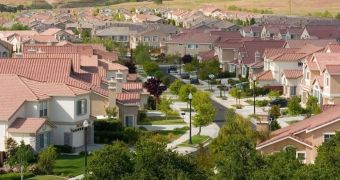In their perennial quest to developing new methods of increasing energy efficiency, and reducing consumption and waste, researchers have recently come up with a new concept that could see that happening. They argue that creating neighborhood grids, which could act like autonomous, smaller versions of the national power grids, could contribute to energy efficiency considerably. Each of the houses that would be connected to the network would receive precisely the amount of power it needs, thus minimizing excesses, and boosting energy savings by a large margin, ScienceDaily reports.
The new proposal comes from experts in the Beywatch project. The European initiative stands for Building Energy Watcher, a new approach in handling energy efficiency. The goal of this research is to determine the optimal combination of innovation and new technologies that could see the creation of smart homes. These dwellings would be able to regulate their own consumption, and share power with other homes in the local grid efficiently. Scientists even envision neighborhoods in which homes could even generate electricity and hot water on their own, and then share it in the grid. The project covers the entire route electricity takes, from the power station to the light switch.
Some of the necessary innovations required for this to work include monitoring and control networks for the entire neighborhood, real-time communications with energy providers, smart home energy meters, as well as home appliances that are able to communicate with each other, and be ultra-highly efficient in saving power. The approach also envisions using photovoltaic and thermal solar panels for producing electricity in-situ, or for heating water to be distributed in the grid later on in the day. “But we are not reinventing the wheel. We are using off-the-shelf parts where possible. For example, we will use the Zigbee Smart home network to link all the home appliances and power control systems together,” Beywatch project coordinator Pierre Plaza says.
At this point, a lot of attention is paid to the way this new system could be set up. One possibility is for each home owner that is willing to enter the initiative to pay for their own equipment. But this will likely deter many. Even if the return would be felt immediately, the initial investment would be rather large. Another option is to subsidize that passing from conventional power grids to the modern ones, and install all equipment in a selected area, while the owners pay a regular contract fee for a period of five or ten years.

 14 DAY TRIAL //
14 DAY TRIAL //